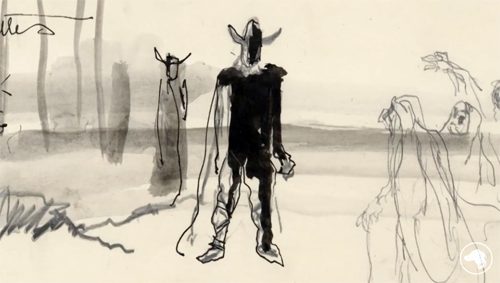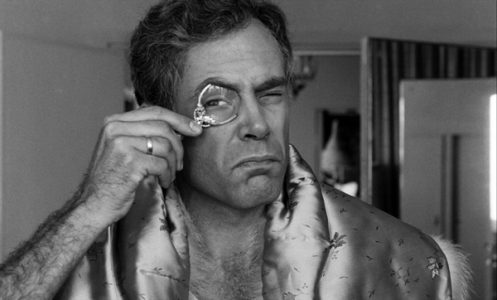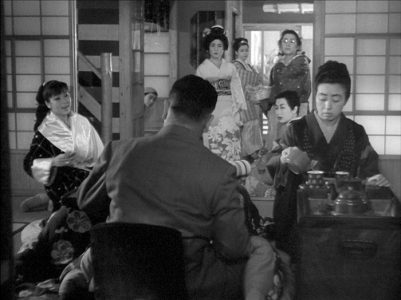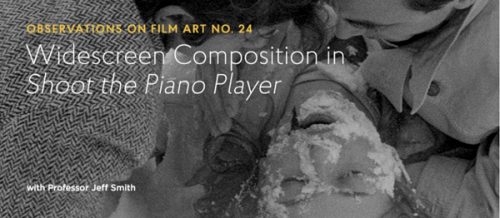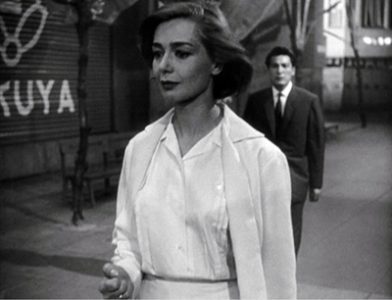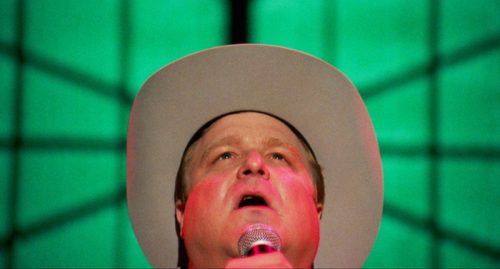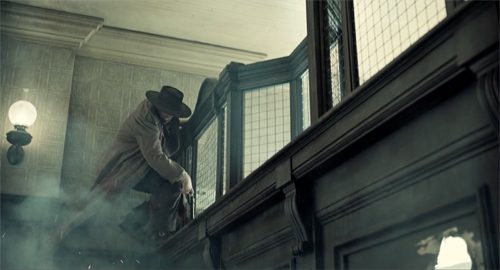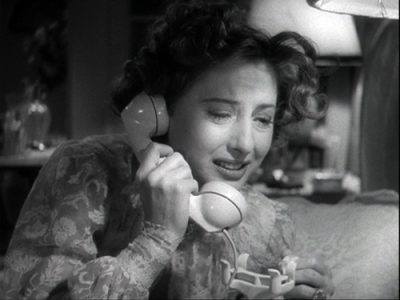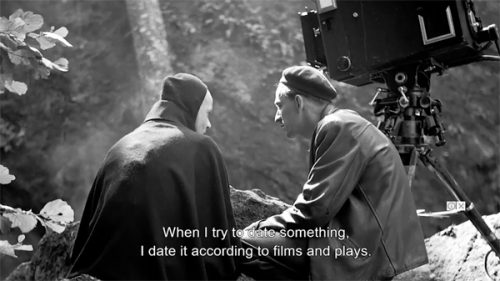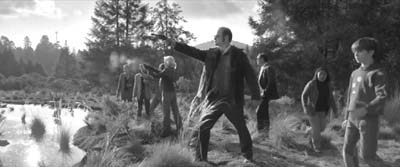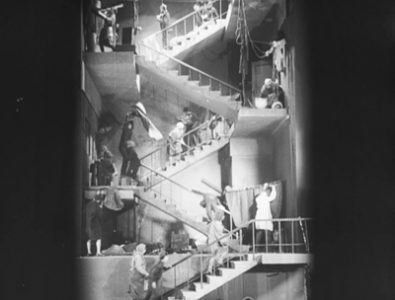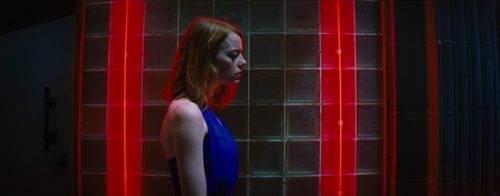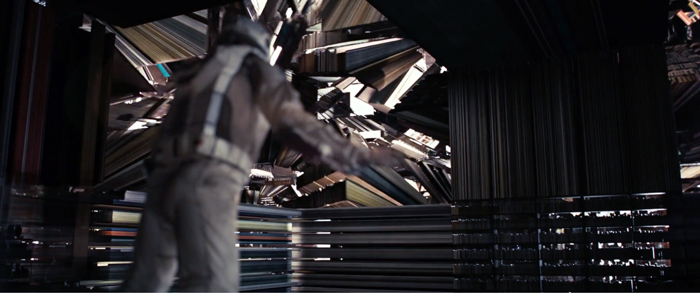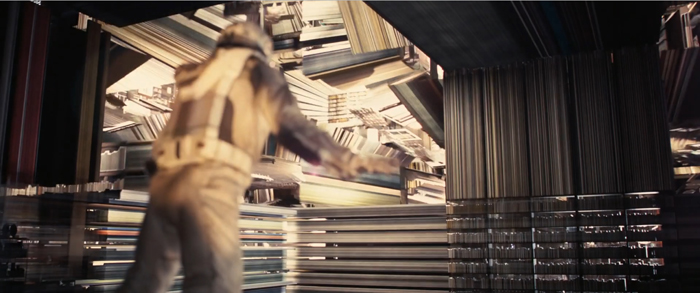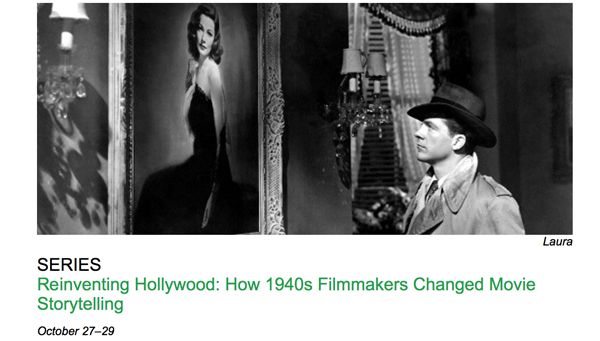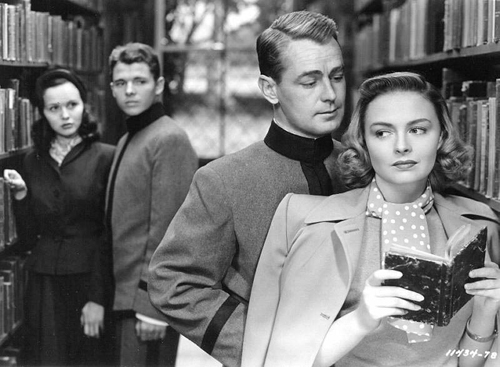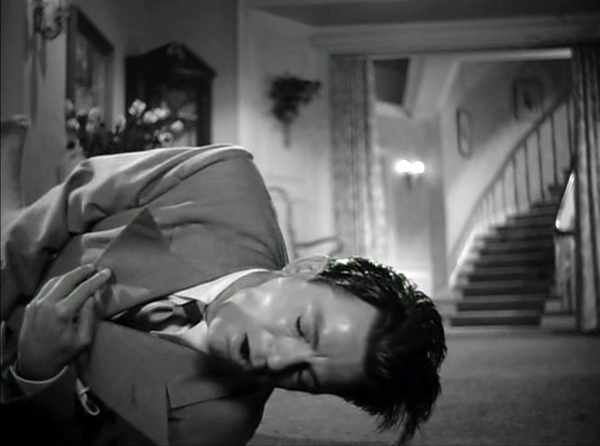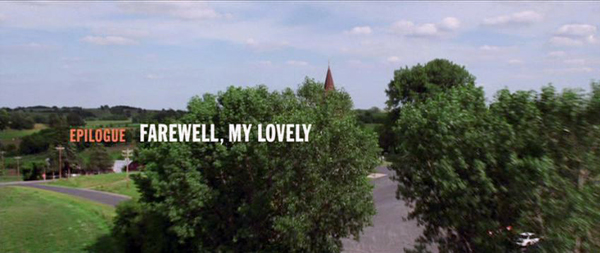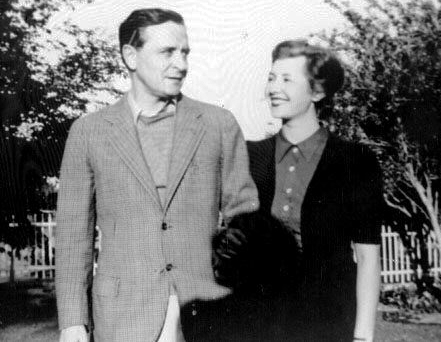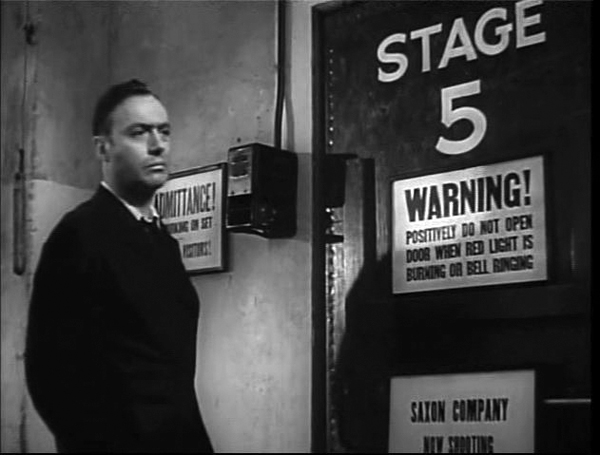Archive for the 'Poetics of cinema' Category
Is there a blog in this class? 2019
Kristin here:
David and I started this blog way back in 2006 largely as a way to offer teachers who use Film Art: An Introduction supplementary material that might tie in with the book. It immediately became something more informal, as we wrote about topics that interested us and events in our lives, like campus visits by filmmakers and festivals we attended. Few of the entries cite Film Art, but most of them are relevant.
Every year shortly before the autumn semester begins, we offer this list of suggestions of posts that might be useful in classes, either as assignments or recommendations. Readers who aren’t teaching or being taught might find the following round-up a handy way of catching up with entries they might have missed. After all, we have posted well over 900 entries, and despite our excellent search engine and many categories of tags, a little guidance through this flood of texts and images might be useful.
This list starts after last August’s post. For past lists, see 2007, 2008, 2009, 2010, 2011, 2012, 2013, 2014, 2015, 2016, 2017 and 2018.
Last year for the first time I included recommendations for potentially useful videos in our series “Observations on Film Art” (a sort of extension of this blog) on the FilmStruck streaming service. Every month Jeff Smith (also our collaborator on Film Art), David, and I had contributed a visual essay that applied concepts from Film Art: An Introduction to a film (or films) streaming on FilmStruck, which began in November of 2016 and ended in November of 2018.
Fortunately in April, 2019, that platform was replaced by The Criterion Channel, which had been a major attraction as part of FilmStruck. The essays that we had contributed to FilmStruck have all been reposted on the new service, and we have continued to contribute monthly essays. As of now there are 29 essays online. See last year’s “Is there a blog in this class? 2018” for the earlier videos. (For information on the changeover of services, see here.)
Chapter 1 Film as Art: Creativity, Technology, and Business
I’ve written an occasional series on the progress of 3D in modern cinema. In an entry concentrating on exhibition rather than the technology or the movies, I talk about the decline in the number of 3D screenings as they lose popularity: “3D in 2019: RealDivided?”
In Chapter 1 we briefly deal with the concept of the author or auteur of a film. David provides an example of how one characterizes an auteur’s work in “Terence Davies: sunset songs.” Is Michael Curtiz as clearly an auteur as Orson Welles is? This entry considers some evidence.
No year on the blog is complete, it seems, without something on Hitchcock. This time David considered Notorious, preparing the way for a video essay for the Criterion release of this masterpiece.
At greater length, our updated e-book on Christopher Nolan is a study of him as an auteur with a “formal project.” David discusses the changes in “Christopher Nolan: Back into the Labyrinth.” A later entry considers (unconvincing) critical attacks on Nolan’s work.
Chapter 3 Narrative Form
In The Criterion Channel video essay, #25, “Lydia and the power of flashbacks,” David discusses the somewhat experimental ways in which flashbacks are used in Julien Duvivier’s 1941 romance. He extends his analysis in “Lovelorn LYDIA: A new installment on The Criterion Channel.”
I analyze one aspect of narrative form in The Favourite: “Balancing three protagonists in THE FAVOURITE.”
Narrative options both old (the 1940s) and new (Happy Death Day 2U) are considered in an entry on how incidents can be repeated and varied, within a film and from film to film.
This chapter of Film Art discusses narration in terms of depth, how much of characters’ knowledge and thoughts are revealed to us. In “Observations on Film Art” #26 on The Criterion Channel, Jeff examines technique that allow us access to the protagonist’s mind in “Memories of Underdevelopment.” He expands on that analysis in “Politics and Subjectivity: MEMORIES OF UNDERDEVELOPMENT on The Criterion Channel.”
Can the tools of narrative analysis shed light on The Narrative of contemporary US politics? David tries in the entry “Reliable narrators? Telling tales on Trump.”
Chapter 4 The Shot: Mise-en-scene
#27 in our “Observations on Film Art” on The Criterion Channel, David examines the intricate mise-en-scene of Kenji Mizoguchi: “Games of Vision in STREET OF SHAME.” He elaborates on the blog with “How to hypnotize the viewer: Mizoguchi’s STREET OF SHAME on The Criterion Channel.”
David analyzes the staging of a scene in Augusto Genina’s Il Maschera e il Voto (The Mask and the Face, 1919) in “Sometimes an actor’s back …” Those of you teaching Film History: An Introduction might find this entry useful in relation to the discussion of tableau staging in Chapter 2.
Chapter 5 The Shot: Cinemagraphy
In The Criterion Channel’s #24 in the “Observations on Film Art” series, Jeff Smith analyzes “Widescreen Composition in Shoot the Piano Player.” He offers additional commentary on the subject in a blog entry, “On The Criterion Channel: Jeff Smith on SHOOT THE PIANO PLAYER.”
Chapter 6 The Relationship of Shot to Shot: Editing
In The Criterion Channel’s #23 video, “Mutations of Memory–Editing in Hiroshima Mon Amour,” David discusses the film’s complex, innovative use of editing to create flashbacks. He expands on that analysis in the blog entry, “On The Criterion Channel: Five reasons why HIROSHIMA MON AMOUR still matters.”
Dissolves provide a way to join shot to shot. They’re usually used sparingly and in conventional ways (flashbacks, ellipses). In “Observations on Film Art” #22 on The Criterion Channel, “Dissolves in The Long Days Closes,” I discuss how dissolves become a prominent formal device in Terence Davies’ film.
Chapter 7 Sound in the Cinema
Guest blogger Jeff Smith analyzes the music in True Stories: “From transistors to transmedia: Talking Heads tell TRUE STORIES.”
Jeff takes an informative look at the five songs from 2018 films nominated for Oscars in “Oscar’s siren song: The return: a guest post by Jeff Smith.”
Chapter 8 Summary: Style and Film Form
David analyzes cutting and framing in one scene in the Coen Brothers’ The Ballad of Buster Scruggs in “The spectacle of skill: BUSTER SCRUGGS as master-class.”
The great critic André Bazin decisively shaped our sense of how to understand film form and style. David explores some of his ideas in “André Bazin, man of the cinema” and an essay, “Lessons with Bazin.”
Chapter 9 Film Genres
David on film noir: “REINVENTING HOLLYWOOD in paperback: much ado about noir things.”
Chapter 10 Documentary, Experimental, and Animated Films
Reporting from the Vancouver festival, David discusses two documentaries that might be useful to show if you program films by either of these directors for your class: The Eyes of Orson Welles and Bergman: A Year in the Life. See his “Vancouver 2018: Two takes on two directors.”
David on three documentaries shown at our hometown film festival this year, in “Wisconsin Film Festival: Not docudramas but docus as dramas.”
Chapter 11 Film Criticism: Sample Analyses
We were lucky enough to return to the Venice International Film Festival last year, again offering analyses of some of the films we saw. These are much shorter than the ones in Chapter 11, but they show how even a brief report (of the type students might be assigned to write) can go beyond description and quick evaluation.
The first entry deals with the world premiere of Damien Chazelle’s First Man and is based on a single viewing. The second discussed Alfonso Cuarón’s Roma and Mike Leigh’s Peterloo.The third offered David’s thoughts on the posthumous release version of Orson Welles’s The Other Side of the Wind. In a fourth, I dealt with five films from the Middle East, including Amos Gitai’s A Tramway in Jerusalem. David considers variants of wrong-doing in films from around the world, including Zhang Yimou’s Shadow and Erroll Morris’ American Dharma. Sixth and last was my longer analysis of László Nemes’s brilliant but challenging second feature, Sunset. We plan to carry on this tradition of comments on new films when we attend the Venice International Film Festival next month.
Our annual visit to the Vancouver International Film Festival yielded more brief analyses of new films. In “Vancouver 2018: Landscapes, real and imagined,” David looks at some recent Asian films, including Kore-edge Hirozaku’s Shoplifters. In “Vancouver 2018: A panorama of the rest of the world,” I comment on three films by important international directors: Nuri Bilge Ceylon’s Turkish The Wild Pear Tree, Benedikt Erlingsson’s Icelandic Woman at War, and Pavel Pavlikowski’s Polish Cold War.
I followed up with more international films in “Vancouver 2018: Panorama of the rest of the world, the sequel“: Matteo Garrone’s Italian Dogman, Nina Paley’s American Sedar-Masochism, Wolfgang Fischer’s Austrian Styx, and Christian Petzold’s German Transit. David wrote about crime films (and a TV show) in “Vancouver 2018: Crime waves.” These notably included Lee Chang-dong’s Burning. Our wrap-up, “Vancouver 2018: A few final films,” again had an international flavor, commenting on Jafar Panahi’s Iranian 3 Faces (his defiant fourth feature since the government banned him from filmmaking for twenty years), Nadine Labaki’s Lebanese Capernaum, and Ciro Guerra and Cristina Gallego’s Colombian Birds of Passage.
Looking back on these two festivals makes it clear that 2018 was an extraordinary year for the cinema!
David analyzes True Stories on the occasion of its release on Blu-ray: “Pockets of Utopia: TRUE STORIES.”
Chapter 12 Historical Changes in Film Art: Conventions and Choices, Tradition and Trends
Teaching film history? My annual choice of the ten best films from 90 years ago offers some familiar and not-so-familiar titles: “The ten best films of … 1928.” I also consider two releases of major German silent films.
Many of our entries from Il Cinema Ritrovato in Bologna consider older films, especially those from 1919 in “German and Scandinavian classics.” I discuss some major African films in “Who put the pan in Pan-African cinema?”
I discussed a Blu-ray release of two rare films by Mary Pickford in “Pickford times two.”
A more recent trend in film history, that of the improvised independent American film, is considered in our review of J. J. Murphy’s book Rewriting Indie Cinema.
Finally, for Film Art: An Introduction users, an account of how Jeff Smith, David, and I revised our textbook for its twelfth edition.
After forty years, we’re still grateful to teachers and students who have found Film Art: An Introduction useful in their study of cinema.
Christopher Nolan: Back into the labyrinth
Interstellar (2014).
DB here:
A new edition of our e-book Christopher Nolan: A Labyrinth of Linkages has just gone into production at the hands of our web tsarina Meg Hamel. It updates our discussion of Nolan’s career by including a brand-new chapter on Interstellar and one on Dunkirk that revises and expands our blog entries on the film (here and here).
The book also includes a new chapter surveying Nolan’s approach to filmic storytelling, along with more links and frame enlargements. I wrote the bulk of this second edition, with Kristin contributing portions on exposition in Inception and Dunkirk.
As in the first edition, I try to respond to the objections that some viewers have about Nolan’s work. I grant some problems with his films, chiefly at the level of visual style. But I also try to make a case that Nolan has been exploring film narrative in ways that are significant for film history. I argue that his achievement contributes to storytelling trends of his moment (from the 1990s on) and in art and literature more generally. His work is shaped by what I call a “formal project,” akin to that we find in Alain Resnais and Hong Sangsoo.
Nolan’s detractors are likely to counter that those directors are better than Nolan. But they work in different circumstances. In the context of mass-audience Hollywood cinema, I think Nolan’s work repays scrutiny.
I’m mostly offering analysis, not evaluation. I have to admit, though, that in reworking the book and rewatching the films, I’ve come to extend my admiration for certain projects (The Prestige, Dunkirk) to others, especially Interstellar. Still, even if you don’t share my regard for the films, I think that it’s worth discussing what Nolan’s accomplishment shows about trends in modern cinema and the broader possibilities of filmic storytelling.
Which is to say, yet again, that Christopher Nolan: A Labyrinth of Linkages 2.0 is primarily a venture in film poetics.
We hope to make the new edition available this month or in January. It would be priced higher than the current edition, at $3.99 (i.e., the cost of a Tall Caramel Frappucino). This pays for a new design for the book, one exploiting the horizontal format for widescreen frame enlargements. We won’t be embedding video extracts in the text, as we did last time, but we may set up the clips as online links.
To the hundreds of you who bought copies over the years, thank you. We appreciate your support, and we hope that the new edition will also be worth the attention of the readers who visit this site.
Just to be clear, we’ve also welcomed the narrative explorations of Resnais and Hong Sangsoo on our website, and in our research more generally.
Interstellar (2o14).
REINVENTING HOLLYWOOD comes to Astoria
DB here:
Next weekend Astoria’s wonderful Museum of the Moving Image is sponsoring a series of films keyed to my book Reinventing Hollywood. The program consists of Laura on Friday, A Letter to Three Wives and Unfaithfully Yours on Saturday, and Our Town and Portrait of Jennie on Sunday. Here’s the schedule.
I’ll be giving a talk before Three Wives and will hang around for conversation and book-signing afterward. If you’re in the vicinity, why not come by? Note: Four of the five screenings command 35mm prints! If you’ve only seen Our Town in the horrendous public-domain video versions, you’re in for a treat, because it looks (and sounds) superb in 35. Then again, there’s that tidal-wave ending to Portrait of Jennie, a force of nature on the big screen.
Looking better than when he made it?
Beyond Glory (1948). Production still.
Actually, this entire clutch of classics is pretty fair sampling of the audacity of the period, an age when narrative delirium was welcomed. Of course a lot of A pictures were stodgy, but there were an unusual number of both popular hits and less-successful items that are engagingly experimental.
The book, as Tony Rayns remarked in his Sight & Sound review, ventures beyond the classics. I cover all the films in the MoMI program, but a lot of space is devoted to minor movies too, a fair number of B films and plenty of “nervous A’s.” Those nervous A’s–films trying to get by on less-known stars, unfamiliar source material, or just a strange premise–provided me with lots of examples.
A friend who likes Reinventing Hollywood said that it was too bad I had to spend so much time on obscure and second-rate movies. It’s true that in viewing I slogged through quite a few dogs. Most weren’t illuminating, but some were, and I slid them into the manuscript, even if the reader was unlikely to have heard of them.
But two factors pop up here. First, I wanted to show just how pervasive the newly popular storytelling techniques were. That meant considering items outside the canon. When you think of complicated flashback films, you don’t think of Beyond Glory (1948) and Backfire (1949), though they may be the most intricate time-shuffling movies of the period. If you arrange the past-time events in the order we see them, Beyond Glory gives us 10-9-8-1-4-3-5-6-7-2. In Backfire, the order of presentation is 3-5-2-4-1-6-7.
These show a very 40s development: By then, such time schemes were becoming commonplace. Moreover, the fact that these two films come at the end of the decade is itself of interest. Was there a kind of arms race to tell stories in ever more elaborate ways?
Looking at the less-known items can also yield a sense of the limits of innovation. Sometimes these movies went too far. One critic noted of Beyond Glory that it “moved slowly and confusingly through a great many flashbacks.” As for Backfire, even the director Vincent Sherman had qualms:
That picture had an involved story, with flashback-within-flashback, and I hated it. The interesting thing is that not long ago I saw the film, and it looked better than when I made it.
Sherman’s last remark is indeed interesting. Today, after the really fragmentary flashback constructions we find in films from the 1990s onward, films like these (and The Locket and Passage to Marseille) don’t look as ornery. Any day now you may hear from a Tarantino fan that Backfire is a masterpiece.
More broadly there’s an issue of method, and it’s controversial. I suspended matters of quality to an unusual degree. Of course the book talks a lot about bona fide classics. I praise films by Preminger, Ford, Hitchcock, Welles, Mankiewicz, Sturges, et al. But I stubbornly persist in believing that we can best understand their accomplishments in the context of the broader burst of storytelling strategies that swept through the 1940s.
True, great writers and directors provided some of the energy for that burst, but they didn’t work alone. I think, for instance, we appreciate It’s a Wonderful Life better if we know about conventions of voice-over narration, angelic intervention, and flashback construction that had already crystallized when Capra and his screenwriters gave them a new spin.
A lot of researchers suspend questions of value in order to bring to light other factors. Scholars studying gender, race, and ethnicity consider films of all levels of quality representing women or African Americans or Jewish culture. Students of genre often find that lesser-known Westerns or musicals shed light on certain conventions. Even failures can be instructive.
Reinventing Hollywood pursues a similar method but on an area of creativity less commonly considered: narrative. The book tries to trace both common and offbeat strategies of plot construction and narration–at a period when innovation in those domains was rewarded. In some instances, we get striking innovations more or less by accident.
In sum, I was more interested in reconstructing the major and minor storytelling options of the period than in picking out masterpieces. Going into the kitchen to watch the menu being devised, you might say, rather than savoring a few consummate meals. That meant bulk viewing, which yielded a bulky book (but a good bargain at the price).
Some day it would be fun to mount a series of intriguing second-tier items I ran into. They’ll never be classics, but they do shed light on my research questions. Apart from completists, there are fans who would enjoy seeing things that are elusive on video and never make it to repertory screens or archive retrospectives. The problem then, as for me, was finding prints….
Thanks to David Schwartz and his colleagues for arranging this event at MoMI.
Backfire (1949).
Caught in the acts
Kiss Kiss Bang Bang (2005).
DB here:
If you’re interested in how films tell stories, I think that you’re interested in several dimensions of narrative. Those include the story world (characters, settings, action), narration (how story information is parceled out as the film unrolls), and plot structure (the arrangement of parts).
Plot structure matters because a movie’s parts, like parts of a song or a symphony, help shape our experience. Just as a “curtain line” makes us return after intermission, a cliff-hanging climax to a TV episode makes us tune in next week–or click to continue, if we’re binge-watching. Accordingly, storytellers reflect on how to chop up and lay out sections of their plots. Novelists fret over chapter divisions, TV writers massage their scripts to allow for commercial breaks, and playwrights map action into acts.
The idea of act-structure has passed into commercial screenwriting as well. Just when that happened is hard to say, but certainly by the 1980s scriptwriters consciously broke their screenplays into big chunks. That trend was largely the result of Syd Field’s 1979 book Screenplay: The Foundations of Screenwriting, although some of his points had been anticipated in Constance Nash and Virginia Oakley’s Screenwriter’s Handbook (1974). From these books came the idea that a feature film script had a three-act structure, measured by time segments (30 minutes/ 60 minutes/ 30 minutes). The prototype was a 120-minute film, with each script page running about one minute of screen time. Field fleshed the model out by noting that “plot points” at the ends of acts one and two turned the conflicts in a new direction. Although other writers argued for other templates, and Field’s model was refined (what’s the “inciting incident” in Act One?), versions of the three-act model still rule the international film industry.
Field presented his anatomy as an analysis of hit films like Chinatown and Close Encounters of the Third Kind. He suggested it as a template for a successful plot. As Field’s book gained prominence, his guidelines gave production companies an heuristic for triaging submissions. Now a story analyst could simply check pages 25-35 and 55-65 for turning points, and “incorrect” scripts could be discarded immediately. (But see P.S. below.) Through a feedback cycle, the Field model became a guide to both screenwriters and industry decision-makers. Inevitably, the whole thing got mocked. The day-by-day structure of Shane Black’s Kiss Kiss Bang Bang parodies Field’s scheme, and it closes with a self-conscious epilogue. “So,” says the narrator, “that’s pretty much that….”
To what extent, though, was the three-act structure employed in earlier eras? Field’s original edition drew its examples from current hits, but he implied that classics would display the same underlying architecture. Kristin, in Storytelling in the New Hollywood, claimed that four parts were more common than three, and she supported her analysis with examples from films from the silent era and the classic studio years.
But film analysis depends on your perspective. In any movie you can find patterns different from the ones I find, and each of us can make persuasive cases. It would be valuable to know whether American screenwriters in the studio system consciously worked with an act-based model. If they did, what assumptions did they make about the length and organization of each act?
Some poor sucker of a screenwriter
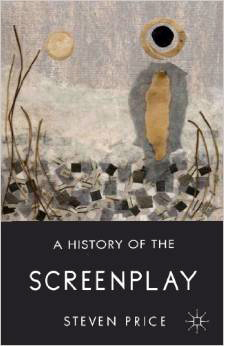 Steven Price’s new book, A History of the Screenplay, surveys the practices of screenplay composition in America and Europe. It traces the early years of outlines and scenarios through the continuity script of the silent years, the sound screenplay, and postwar European models, up to the New Hollywood and contemporary standards. It’s a fascinating study and sure to set a benchmark in our understanding of the conventions of screenwriting. For the 1930s and 1940s in America, Steven shows that filmmakers used two formats, either the “master-scene” one or a format involving more explicit instructions about camerawork, lighting, and other aspects. But he finds little direct evidence that screenwriters of the studio era consciously applied a three-act structure.
Steven Price’s new book, A History of the Screenplay, surveys the practices of screenplay composition in America and Europe. It traces the early years of outlines and scenarios through the continuity script of the silent years, the sound screenplay, and postwar European models, up to the New Hollywood and contemporary standards. It’s a fascinating study and sure to set a benchmark in our understanding of the conventions of screenwriting. For the 1930s and 1940s in America, Steven shows that filmmakers used two formats, either the “master-scene” one or a format involving more explicit instructions about camerawork, lighting, and other aspects. But he finds little direct evidence that screenwriters of the studio era consciously applied a three-act structure.
For some time, I’ve held the same view. I couldn’t find any script draft broken into acts. Some veteran screenwriters admitted using a three-act model in plotting, but their testimony came long after the era. So, for instance, Philip Dunne says he used a three-act organization for his 1940s screenplays, but he makes the claim in an interview published in 1986. Billy Wilder says he “wrote [Charles Boyer] out of the third act” of Hold Back the Dawn (1941), but the remark comes in an interview given decades later. There’s always the possibility that older writers, newly aware of the Fieldian template, were projecting it backward onto their work—assuring us that they conform to contemporary standards, or even asserting precedence.
Similarly, we can’t rely too much on secondary sources. True, screenplay manuals, from at least 1913 onward, have recommended a three-part structure, purportedy corresponding to Aristotle’s idea that a plot must have a beginning, a middle, and an end. But this rests on a misunderstanding. As I’ve mentioned before, Aristotle isn’t talking of acts; ancient Greek plays didn’t have act divisions. And almost none of the manuals use the term “acts” to describe the parts.
Richard Brooks’ novel The Producer (1951), about a weak-willed executive trying to do the right thing, offers some hints along similar lines. He mentions that a screenplay should run to 120 pages, confirming the canonical length that Field proposes. Likewise, Brooks obliquely appeals to Aristotle.
Some poor sucker of a screenwriter has to create a beginning, a middle and an end, and all the dialogue.

Perhaps there’s an intentional irony in the fact that Brooks’ Hollywood exposé is itself broken into three parts, labeled “The Beginning,” “The Middle,” and “The End.”
Unlike many authors of manuals, Brooks was an established screenwriter, and we might expect his novel to refer to acts. It doesn’t. But Lewis Herman, a minor scribe with three screen credits (including Anthony Mann’s Strange Impersonation), does. His 1952 manual declares that a feature-length film is built upon “a three-act theme outline.” The context suggests that the Hollywood studios demand this as a step toward developing a full screenplay. Herman usefully illustrates the outline with a hypothetical example.
Still, manuals or novels aren’t ironclad sources for studio practice. Better would be contemporaneous evidence from memos, story conferences, and similar unpublished documents. Claus Tieber has done extensive research into such sources and has found no discussions of three-act structure. I’ve found a few, but they’re fairly sketchy.
Overseeing Casablanca, Hal Wallis told Michael Curtiz, “The Epsteins have agreed to deliver the film’s ‘second act’ the following day.” Darryl F. Zanuck mentioned the “last act” in correspondence about Viva Zapata! and On the Waterfront. Supposedly John F. Seitz asked Preston Sturges about the flashback structure of The Great Moment: “Why did you end the picture on the second act?” As I noted in an earlier entry, David Selznick’s papers record a story conference on Portrait of Jennie in which Jed Harris remarks: “The second act–he must get the picture back because that’s all he’ll ever have of her.” He adds that at this point the film “is about 1/3 gone.” This suggests that some practitioners thought of the parts as roughly equal in length. (Kristin’s model proposes that this was the case.)
It may be, of course, that three-act structure of some sort was so ingrained in studio writers’ habits that they didn’t have to discuss it explicitly. Field was addressing aspiring screenwriters who wanted inside knowledge, but as intuitive craft workers, the old contract writers wouldn’t be likely to spell out rigid rules about length and dramatic patterning.
Since corresponding with Steven for his book, I’ve found that one screenwriter explicitly invoked three-act structure in his working notes. And I’m embarrassed not to have noticed it earlier.
Coupling, recoupling, and Joe Breen
F. Scott Fitzgerald and Sheilah Graham.
NICOLAS: Marriage has its phases–its acts–like anything else. This is another act, that’s all.
F. Scott Fitzgerald, screenplay for Infidelity.
F. Scott Fitzgerald’s Hollywood career was mostly a fiasco. Thanks to temperament, a mentally disturbed wife, bouts of breakdown and alcoholism, and an implacable industry, he worked his way down the hierarchy to unemployment. From July 1937 to his death in 1940, he earned screen credit for just one film, Three Comrades (1938). He also started, but didn’t finish, the best Hollywood novel I know, The Love of the Last Tycoon (aka The Last Tycoon). I think it spells out some features of the Hollywood aesthetic with special vividness.
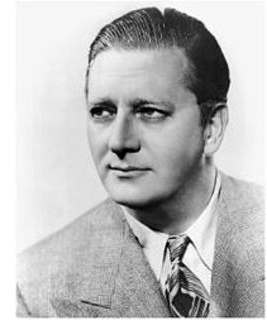 In early 1938 Fitzgerald began a screenplay for MGM producer Hunt Stromberg (right). Given a title, Infidelity, Fitzgerald came up with a script centered on a dead marriage. What has turned happy young lovers into a polite, numb couple? An extended flashback shows that two years earlier the husband Nicolas re-met his former secretary while his wife Althea was abroad taking care of her sick mother. The secretary, Iris, spent one night at Nicolas’ luxurious home, and it’s implied that they had sex. At breakfast, Althea returned home unexpectedly and found Iris at breakfast. After this, Althea remained married to Nicolas, but simply lived with him in detached ennui.
In early 1938 Fitzgerald began a screenplay for MGM producer Hunt Stromberg (right). Given a title, Infidelity, Fitzgerald came up with a script centered on a dead marriage. What has turned happy young lovers into a polite, numb couple? An extended flashback shows that two years earlier the husband Nicolas re-met his former secretary while his wife Althea was abroad taking care of her sick mother. The secretary, Iris, spent one night at Nicolas’ luxurious home, and it’s implied that they had sex. At breakfast, Althea returned home unexpectedly and found Iris at breakfast. After this, Althea remained married to Nicolas, but simply lived with him in detached ennui.
Back in the present, to ramp up his mood, Nicolas decides to hold a party in the country estate he had more or less abandoned. At the same time, Althea rekindles her friendship with a former suitor, Alex. She can’t arouse herself to passion, though, and Alex leaves her. As she drives more or less hysterically to the estate where the party is in full swing, Nicolas is wandering through his mansion among the shrouded furniture.
At this point, because of objections from the Production Code office, Stromberg halted Fitzgerald’s work on the screenplay. Aaron Latham’s biography tells us that Fitzgerald had planned to present a reconciliation, in which a photographic trick presents Althea seeing herself as Iris and thus forgives Nicolas. But this ending would suggest that the husband’s sin went unpunished. Fitzgerald suggested an alternative, but this too was rejected by Joseph Breen. He tried to redraft the script later in 1938, but the project dissolved.
Fitzgerald had systematically studied Hollywood releases, even filing plot synopses on index cards. Accordingly, the Infidelity screenplay we have shows an awareness of 1930s storytelling conventions: montage sequences, wordless scenes, and revealing visual detail. We learn that Nicolas’ ardor is cooling when we notice that he has stopped opening Althea’s letters. Fitzgerald’s acquaintance with current trends led him to a thumbnail characterization of Althea’s friend Alex:
He is the type played by Ralph Bellamy in The Awful Truth–handsome, attractive, worthy, thoroughly admirable, but somehow too heavy in manner to grip the sympathy of an audience if playing opposite a man of charm.
Occasionally, voice-over dialogue in the present is matched with images in the past, in the manner of Sturges’ “narratage” in The Power and the Glory. (See our entry here.) And the large-scale flashback structure, leaving a key action in the present suspended for nearly an hour, anticipates a mode of construction that would be common in the 1940s.
Despite its up-to-date air, the plot of Infidelity creaks a bit. It relies on a great many coincidences and introduces rather late a major menace, a sinister surgeon who seems slated to play the disruptive role of George Wilson in Gatsby. But what’s of special interest to us is a schedule of work that Fitzgerald sent to Stromberg during the planning stages.
Fitzgerald groups his scenes into clusters, and alongside each one he notes a date on which he expects to complete it. Since each scene usually runs only a couple of pages, the groupings present a feasible day-by-day timetable. These clusters of scenes are gathered into eight “sequences,” labeled with Roman numerals. In the 1930s, a “sequence” meant, according to screenwriter Frances Marion, “a series of scenes in which the action is continuous without any break in time.” Each of Infidelity‘s sequences presents a unified phase of the action and is more or less continuous in time, although there are some ellipses as well.
Here’s the news: Fitzgerald’s timetable assembles the sequences into acts. Sequences I through IV are labeled “FIRST ACT 45 pages.” Sequences V through VIII are labeled “SECOND ACT 50 pages.” Sequence VIII is continued to form “THIRD ACT 25 pages.”
The first act establishes the loveless marriage and launches the flashback. While Althea is away, Nicolas re-encounters Iris. Meanwhile, as Althea and her mother are on their way home, they conveniently run into her old beau Alex. Their departure for the United States ends this setup. In the screenplay Fitzgerald has typed: “The First Act may be said to end here.”
The second act develops the conflict to a point of crisis. Althea returns a week early to find Iris at breakfast with Nicolas. She resigns herself to a loveless union. Back in the present, he plans the party and at the instigation of Althea’s mother Alex starts to woo her. But he abandons Althea, and by chance she’s found by Dr. Borden, whom she starts kissing. In the notes for Sequence VIII, Fitzgerald cryptically ends the act on an alternation between the couples:
CUT TO husband and back to old beau [Alex]
[Alethea] with beau [Alex]
Crisis with beau and switch [to the surgeon, Dr. Borden?]
CUT TO husband
After presenting this alternation in scenes, the manuscript concludes:
Full shot of a bedroom, large and luxurious like everything else in this house. Soft lighting, everything covered with cloth or canvas.
Nicolas Gilbert is standing in the middle of the floor.
Close shot of Nicolas.
This is presumably the end of the passage labeled “CUT TO husband.” In the Stromberg schedule, this last portion marks the end of Act Two. Act Three isn’t in the canonical version of the screenplay.
A couple of final points about the structure. Although the screenplay is estimated at 120 pages, its proportions don’t conform to the Field paradigm. At 25 pages or minutes, the third act is short. This is a characteristic of both modern and older Hollywood climax sections. But Act One was projected to be very long at 45 pages, and Act Two approximates it at 50. Fitzgerald’s layout is perhaps more characteristic of a stage play, which can afford a longish exposition and equivalent second act. In the script version we have, both acts run equivalent page lengths.
Fitzgerald may have expected some trimming and compression at later stages. In The Producer, Brooks’ protagonist notes that a 120-page script would usually be cut down to 90 minutes because exhibitors wanted films at about that length. It’s true that few films of the studio era run to two hours.
Set aside brute measurements. What, in Infidelity, makes an act a coherent unit? Not a specific span of time. Act One breaks off partway through the flashback, and Act Two ends before the evening party does. The first act ends when we know a crisis is coming: Althea is returning home early and hasn’t told Nicolas, whom we’ve seen flirting with Iris. Act Two ends at another high point. Nicolas confronts the emptiness of his life without his wife, and nearby Althea is heedlessly making love to a stranger with dubious designs. We could easily imagine the script as a stage play, with a curtain ringing down on each of these teasing situations.
In sum, we have one clear-cut case of a studio screenwriter laying out his plot in three acts. We can’t generalize from a single instance, of course, and we would need many more pieces of evidence to consider this a widespread writing strategy. Perhaps Fitzgerald isn’t typical. Did his relative inexperience as a screenwriter make him rely on a theatrical template that others could do without? Did he employ it more as a rhetorical device to convince Stromberg that the plot was firmly constructed? Still, taken with the reminiscences of Dunne, Wilder, et al. and the sketchy mentions we have in production records, the Infidelity project suggests that some conception(s) of three-act structure were operative in the studio period.
Needless to say, we’ll need even more evidence before we can begin to consider whether the filmmakers’ craft practice matches the structural patterns that today’s analysts disclose in the films. The search continues!
The Fitzgerald outline is reproduced on pp. 161-162 of Aaron Latham, Crazy Sundays: F. Scott Fitzgerald in Hollywood (Viking, 1971). This book is not only a stimulating account of the novelist’s Hollywood years but also a helpful view of the movie colony’s culture. My discussion relies upon the version of Infidelity published in Esquire 80, 6 (December 1973), 193-200, 290-304. It is available in a digitized version here. The original manuscripts are in the University of South Carolina library.
Philip Dunne’s remarks about three-act structure are in Pat McGilligan, Backstory (University of California Press, 1988), 158. Billy Wilder’s remarks come in George Stevens, ed., Conversations with the Great Moviemakers of Hollywood’s Golden Age (Knopf, 2006), 316. (In the same interview Wilder claims that Some Like It Hot has four acts.) Richard Brooks’ The Producer (Simon & Schuster, 1951) is worth reading for its almost documentary survey of the process of production at the period. Lewis Herman’s Practical Manual of Screen Playwriting for Theater and Television Films (World, 1952) is an unusually detailed guidebook.
On Wallis’ memo about Casablanca‘s second act, see Marshall Deutelbaum, “The Visual Design Program of Casablanca,” Post Script 9, 3 (Summer 1980), 38. For Zanuck’s comments see Memo from Darryl F. Zanuck: The Golden Years at Twentieth Century-Fox, ed. Rudy Behlmer (Grove, 1993), 173, 226. Seitz’s remark to Sturges about The Great Moment is quoted in James Curtis, Between Flops: A Biography of Preston Sturges (Harcourt, Brace, 1982), 172. There’s more discussion in our blog entry on The Great Moment.
I take Frances Marion’s definition of “sequence” as a bundle of scenes from her How to Write and Sell Film Stories (Covici-Friede, 1937), 373. Tamar Lane offers a comparable definition in his New Technique of Screen Writing (McGraw-Hill, 1936), 123. Interestingly, Lane adds that some scenarists think of each sequence as moving toward a high point, like an act in a play; but this seems only a rough analogy, and the comparison entails that a script would have several more “acts” than three. Steven Price suggests that the “sequence” as an extended script segment emerged in the silent period and hung on in some sound screenplays; see A History of the Screenplay, especially 63, 115-116, and 153-157. At the same time, “sequence” could refer to a single brief segment, as in “action sequence” or “montage sequence.”
Thanks to Steven Price and Claus Tieber for correspondence about act structure. Claus has a relevant case study of Grand Hotel, “‘A Story Is Not a Story But a Conference’: Story Conferences and the Classical Studio System,” in Journal of Screenwriting vol. 5, no. 2 (2014): 225-237. More generally, I’m grateful to researchers at the Screenwriting Research Network for what I’ve learned from their conferences in Brussels in 2011 and in Madison in 2013.
Other entries on this site have considered act structure. Kristin explains her model, based on goal formulation and injections of new information. She expands on this as it affects character subjectivity and point of view. I illustrate her model with reference to what is supposedly the most wayward and narratively fragmented modern genre, the action picture. I offer some general reflections on how the four-part structure informs not only current films but best-selling novels. For a more general discussion of the dimensions of film narrative, you can download this chapter from my Poetics of Cinema. Also, too: there’s the precept that form follows format. Finally, I consider modern trends in screenplay construction, including act structure, in The Way Hollywood Tells It.
After a while you see the triplicate scheme everywhere. In Case History of a Movie (1950), p. 30, Dore Schary says that Charles Schnee turned in the script of The Next Voice You Hear in thirds. Acts? I’ll have to get back to you.
P.S. 19 May 2014: In reply to this post, Greg Beal comments that my discussion of rejecting screenplays based on Field’s plot points is inaccurate.
My claim was, I now think, an overstatement. I should not have suggested that the absence of canonical plot points would be sufficient to doom a screenplay. Naturally, I realize that the analyst would still be obliged to write fuller coverage. I meant simply that the Field template could set up expectations that the script wasn’t written to standard. Other factors would surely be taken into account in a final decision. The larger point, that three-act structure along Field’s lines shapes analysts’ judgment, remains to be determined.
My most concrete evidence for the saliency of the three-act, plot-point model in this production context comes from two manuals by story analysts. T. L. Katahin’s Reading for a Living: How to Be a Professional Story Analyst for Film and Television (Blue Arrow, 1990) recommends that analysts look for three acts, including a ten-page initial setup followed by a development and two further acts that forward the protagonist’s goals. But Katahin doesn’t propose exact page counts for further twists.
More specific is Jennifer Lerch’s 500 Ways to Beat the Hollywood Script Reader: Writing the Screenplay the Reader Will Recommend (Simon and Schuster, 1999). In following the three-act layout, she suggests that Act One, the setup, be consummated between pages 20 and 30 (ideally consisting of two scenes 10-15 pages each). Act 2, as per Field, is said to run long, up to pages 80-90, and typically consists of four to eight sequences (each 10-15 pages or so). This act is said to lead to a point of no return, the pivot-point for Act 3.
Lerch, who was a professional story analyst for the William Morris Agency for eight years, claims, “Your script’s setup can literally make or break your project in the Hollywood Reader’s eyes, particularly at some companies that instruct readers to stop at page thirty of a script if it looks substandard. You may have a great second act and climactic sequence, but Hollywood will never see it unless you give it a savvy setup” (91). Passages like this one led me to think that the Field template weighs quite strongly in analysts’ judgment. But I’ve never supervised story analysts, so I welcome Greg’s expert comment on the matter.
P.P.S. 20 May 2014: More information on Fitzgerald’s Infidelity screenplay and its act breaks. In a letter to Hunt Stromberg dated 22 February 1938, Fitzgerald wrote:
The first problem was whether, with a story which is over half told before we get up to the point at which we began, we had a solid dramatic form–in other words whether it would divide naturally into three increasingly interesting “acts” etc. The answer is yes. . . .
This point, the decision to sail, also marks the end of the “first act.” The “second act” will take us through the seduction, the discovery, the two year time lapse, and the return of the old sweetheart–will take us, in fact, up to the moment when Joan [later, Althea] having weathered all this, is unpredictably jolted off her balance by a stranger. This is our high point–when matters seem utterly insoluble.
Our third act is Joan’s recoil from a situation that is menacing, both materially and morally, and her reaction toward reconciliation with her husband.
Evidently the timetable reprinted in Crazy Sundays was prepared after this letter was sent. This letter is printed in F. Scott Fitzgerald: A Life in Letters, ed. Matthew J. Bruccoli (Scribners, 1994), 348-349.
P.P.P.S. 30 May 2014: I always enjoy getting correspondence from readers, and I must catch up by noting some other responses I’ve received. David Cairns, whose wonderful blog Shadowplay is always worth checking on (his latest post is on Hannibal, the TV show), writes with this comment:
Hold Back the Dawn (1941).












